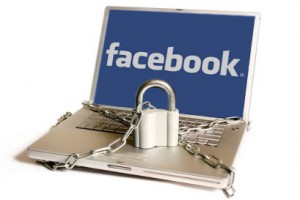Social Media Protection
Is the Friend of My Friend, NOT My Friend?
Recently, some wacky things happened to me on Facebook, so I thought I’d share them along with a few tips to protect your online profiles.
A few weeks ago, a friend I’ve known for years emailed me to say someone asked to “friend” her and when she visited their profile page, the image being used as their profile picture, was me. As flattering as this may seem, it’s a very scary thing! Someone was trying to steal my identity. When I visited their profile, I was able to see for myself.
The current photo I was using was a different one and so even though I reported the fraudulent activity, Facebook kept writing back to me that they didn’t see a problem. I realized I needed to change my profile picture back to that same picture and write them a third time, while also including links to many of my other Facebook business pages as well as my websites, which were using that picture. This time they saw the duplicates and confirmed “I was indeed… ME,” and they deleted that other person’s account.
Then, just a few days ago, a friend of some local friends asked to connect. I visited his profile, looked at the recent posts and who we knew in common. I didn’t see anything wrong, so I accepted. That day, he posted a very weird video on my wall. Yes, I deleted it and unfriended him.
Below are a few social media and web presence tips for your safety online.
- It’s fine to change your Facebook profile image, but make sure your professional headshot is the one used on your website, Facebook business page(s) and other social profiles. Being able to show consistency is helpful in protection.
- Make sure when you upload your photos, you’ve named them properly, not just some numbered file or bogus name. Example: DO NOT name a photo, “my-headshot.jpg” but instead “susan-newman-portrait-2015.jpg.” This will help in proving you are you.
- If there is a problem, ask one or two friends to write on your behalf as well. When Facebook gets 3 reports, they may act quicker.
- When someone asks to connect, really check him or her out, don’t just accept without learning more about them.
- Be sure to look at your own Facebook wall (and other social profiles) each day to be sure there’s nothing odd posted there.
- Check your settings! Be sure of what you want to share with friends, friends of friends, or no one. Be sure you’ve allowed others to post on your wall or not.
- Be sure your passwords are more complex and don’t use the same one, everywhere.
- If by chance you use a shared (public) computer, be aware of who’s watching or nearby when you enter those passwords.

